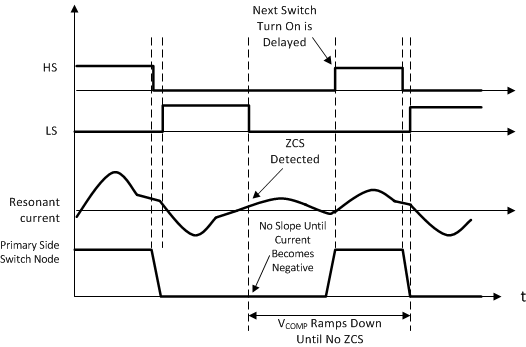SLUAAJ7 June 2022 UCC256402 , UCC256403 , UCC256404
- Abstract
- Trademarks
- 1UCC25640x Selection Guide
- 2UCC25640x Features Brief Overview
- 3UCC25640x Power Up Guidelines and Debugging Notes
- 4References
2.9.2 ZCS Detection and Prevention and Disabling
 Figure 2-39 Timing Diagram of a ZCS Event
Figure 2-39 Timing Diagram of a ZCS Event- ZCS is determined by looking for correct polarity on ISNS signal at high side gate and low side gate turn off edges.
- ZCS is detected:
- If ISNS signal is positive at low side gate falling edge, or ISNS signal is negative at high side galling edge.
- Next switch turn on delayed until correct Ipolarity is detected or maximum dead time of 150 us expires.
- SS pin is pulled low to re-initiate a soft start to push system operating at higher switching frequency.
- Disable ZCS:
- If FBreplica<BMTH this is when system is in light load, ZCS is disabled.